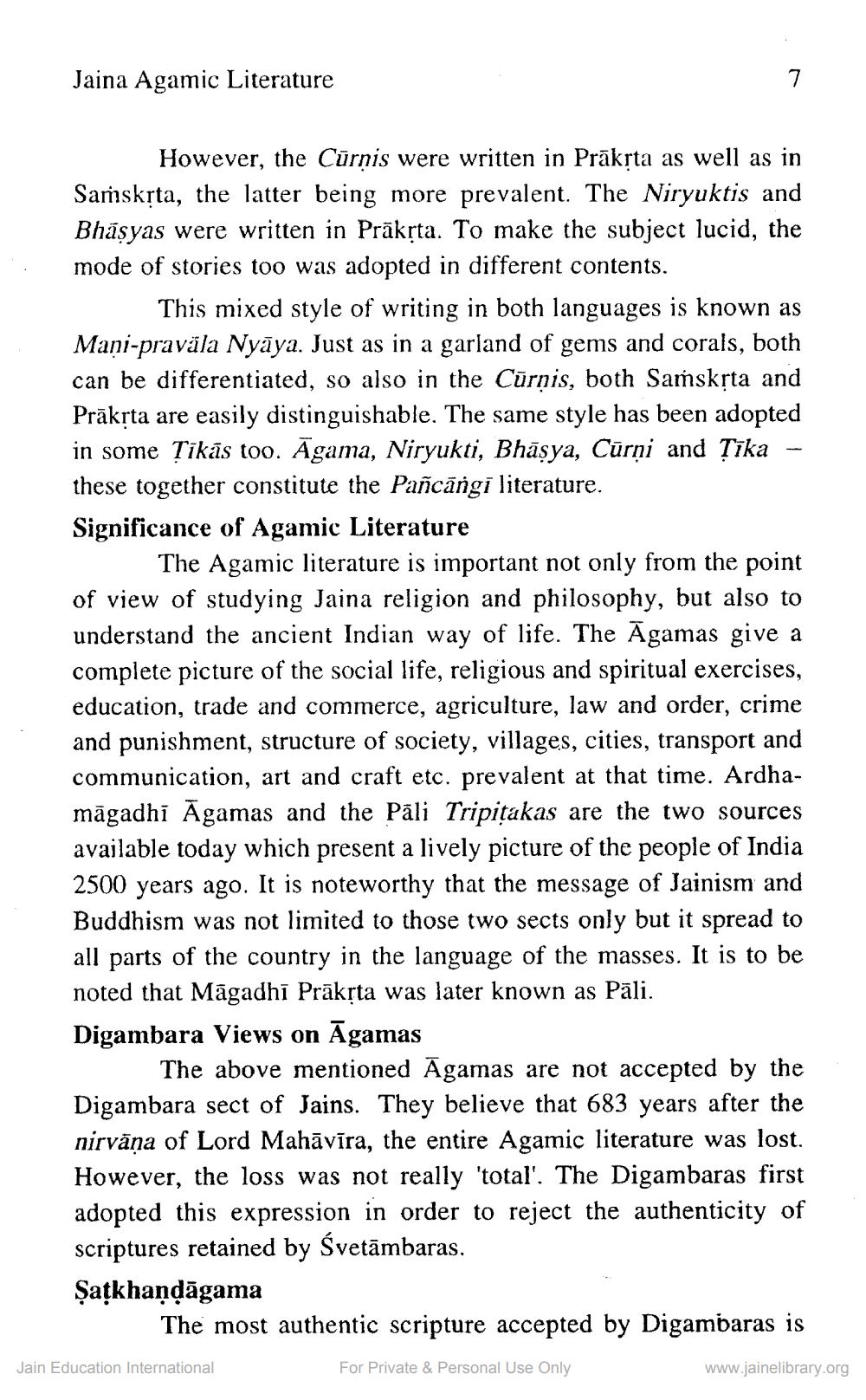________________
Jaina Agamic Literature
However, the Cūrņis were written in Prāksta as well as in Samskrta, the latter being more prevalent. The Niryuktis and Bhäsyas were written in Prāksta. To make the subject lucid, the mode of stories too was adopted in different contents.
This mixed style of writing in both languages is known as Mani-praväla Nyāya. Just as in a garland of gems and corals, both can be differentiated, so also in the Cūrņis, both Saṁskṛta and Prāksta are easily distinguishable. The same style has been adopted in some Țīkās too. Āgama, Niryukti, Bhāsya, Cūrņi and Tīka - these together constitute the Pancāngi literature. Significance of Agamic Literature
The Agamic literature is important not only from the point of view of studying Jaina religion and philosophy, but also to understand the ancient Indian way of life. The Āgamas give a complete picture of the social life, religious and spiritual exercises, education, trade and commerce, agriculture, law and order, crime and punishment, structure of society, villages, cities, transport and communication, art and craft etc. prevalent at that time. Ardhamāgadhi Āgamas and the Pāli Tripitakas are the two sources available today which present a lively picture of the people of India 2500 years ago. It is noteworthy that the message of Jainism and Buddhism was not limited to those two sects only but it spread to all parts of the country in the language of the masses. It is to be noted that Māgadhi Prāksta was later known as Pāli. Digambara Views on Agamas
The above mentioned Āgamas are not accepted by the Digambara sect of Jains. They believe that 683 years after the nirvāṇa of Lord Mahāvīra, the entire Agamic literature was lost. However, the loss was not really 'total'. The Digambaras first adopted this expression in order to reject the authenticity of scriptures retained by Svetāmbaras. Șatkhandāgama
The most authentic scripture accepted by Digambaras is
Jain Education International
For Private & Personal Use Only
www.jainelibrary.org




